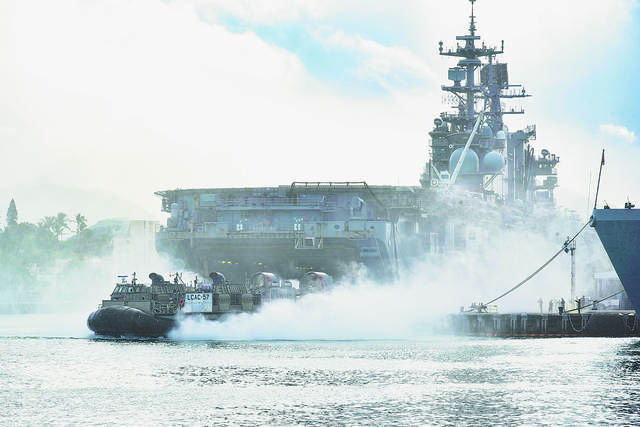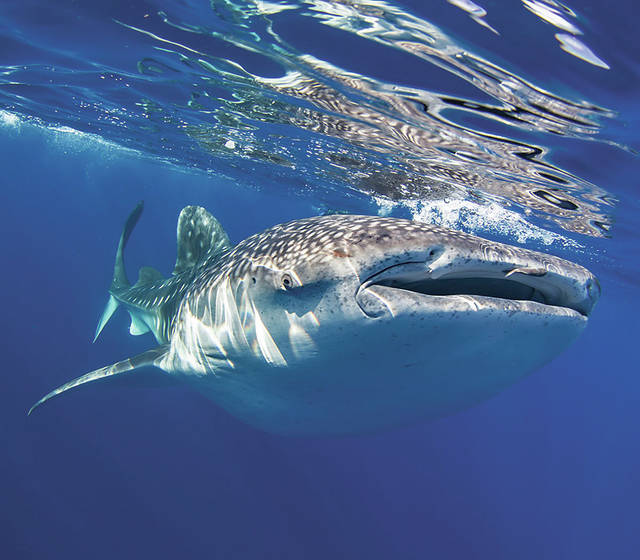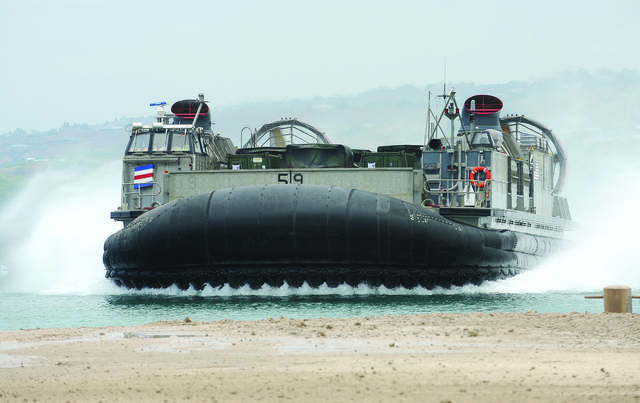KAILUA-KONA — A federal agency has put in place what it described as “the most protective authorizations to date” to regulate environmental impact stemming from water-based military training exercises, but opponents of those actions aren’t convinced.
The National Marine Fisheries Service, a branch of the National Oceanic and Atmospheric Administration, on Thursday released authorizations under the Marine Mammal Protection Act to regulate and mitigate “incidental take” of marine life during Naval training activity in the Pacific Ocean. Such activity includes military special operations exercises set for the West Hawaii coast and other areas across the state in 2019.
NMFS authorizations are as follows:
* Shutting down sonar when marine mammals are in the area
* Waiting for animals to leave the training range prior to use of in-water explosives and monitoring of the area post-activity to detect potentially affected protected species
* Following protocols to reduce the likelihood of ships striking marine mammals
* Imposing operational limitations in certain areas and times that are biologically important (for example, reproduction, migration, foraging)
* Implementing a Notification and Reporting Plan (for dead, stranded or struck animals)
The authorizations are the third set in a five-year series of incidental take regulations. Jennie Lyons, NOAA communications specialist, explained the regulatory measures aren’t entirely new but instead are updated annually to reflect best practices.
“Regulations have been in place prior to this rule,” Lyons wrote in an email to West Hawaii Today, adding the Navy is required by law to follow them. “But biologically sensitive areas are more protected than ever before in that we added areas where no explosive or sonar use can happen. We also reduced times allowed for exercises as a whole.”
She also wrote that the vast majority of authorized, incidental take are expected to come in the form of behavioral disturbance — in other words, displacing marine mammals for a brief time from areas they’d normally frequent for a variety of reasons. There is room before penalty, however, for the accidental take of marine species due to military activity.
“The Navy is authorized incidental, but not intentional, mortality of 10 individual marine mammals in their training and testing and three large whales from accidental vessel strikes over a course of five years,” Lyons wrote.
Both human eyes and acoustic arrays are used to monitor marine animals in efforts to clear areas before military personnel conduct potentially harmful activities.
“The Navy has balanced our conservation requirements for marine mammals with their critical national security requirements for training and military readiness,” retired Navy Rear Adm. Timothy Gallaudet, Ph.D., acting under secretary of commerce for oceans and atmosphere at NOAA, said in the release. “As the acting NOAA administrator and a retired Navy admiral, I know this is a win-win for marine mammal protection and national defense.”
Differing opinions
Training areas on Hawaii Island in 2019 are set to include portions of both the South Kohala and North Kohala coasts, from Mahukona to south of Kawaihae and from Kukio Bay to Waiaha Bay in North Kona.
Military personnel from the Navy, Air Force, Army and U.S. Marine Corps special ops forces will partake in a variety of water-based exercises including deployment and extraction of special ops teams via watercraft, the launch and recovery of submersible small vehicles, and basic swimming and diving.
Land-based exercises involve the foot crossing of beaches, simulated munitions clearing activities that won’t employ active explosives, high angle climbing and special reconnaissance scenarios.
A draft environmental assessment published Nov. 8 issued a finding of no significant environmental impact. Several in the community, however, have expressed concern over the validity of those findings.
One such individual is Rep. David Tarnas, who represents Hawaii Island’s 7th District where training exercises are to be conducted. He has questioned the thoroughness of the draft EA’s methodology.
In a Dec. 7 letter sent to the state Department of Land and Natural Resources, which was responsible for the EA, Tarnas notes that in his opinion site-specific analysis was inadequate to measure impact on resources of cultural, recreational and biological significance. He contended the process also failed to thoroughly consult affected landowners and management agencies.
“Without much more thorough resource analysis and consultation with stakeholders, the Draft EA lacks the necessary information to support a Finding of No Significant Impact,” Tarnas wrote.
The U.S. Naval Special Warfare Command republished the EA in early December to allow for an extension of the public comment period. The public now has until Jan. 7 to offer input.
The EA is available online at https://go.usa.gov/xUnDC (click on Environmental Assessment Open for Public Review at left side of page) and at some public libraries, including the Kailua-Kona Public Library.
The public can submit comments by email to NFPAC-Receive@navy.mil, or by mail to: Naval Facilities Engineering Command Pacific, Attention: Project Manager, EV21.JZ, 258 Makalapa Drive, Ste 100 Pearl Harbor, HI 96860-3134.









training is not “set” as stated in the article. noaa is but one of dozens of agencies and organizations navy special warfare command is required by state of hawaii law to have consulted BEFORE publication of the draft environmental assessment. noaa’s updated regs are proof of significant environmental impact. naval special warfare command’s “anticipated finding of no significant impact” exposes its environmental assessment for the farce it is and naval special warfare command must withdraw it.
This statement says it all… “Without much more thorough resource analysis and consultation with stakeholders, the Draft EA lacks the necessary information to support a Finding of No Significant Impact,” Tarnas (DLNR) wrote.” If Navy is to declare practice war on the marine environment, do it in the Potomac or Mar-a-Logo, and leave Hawai’i alone.